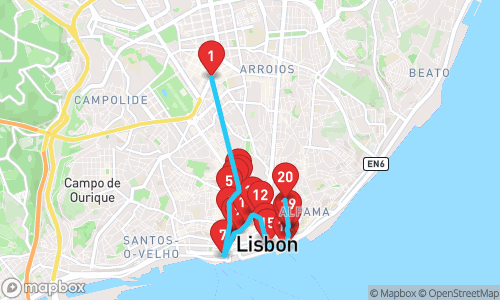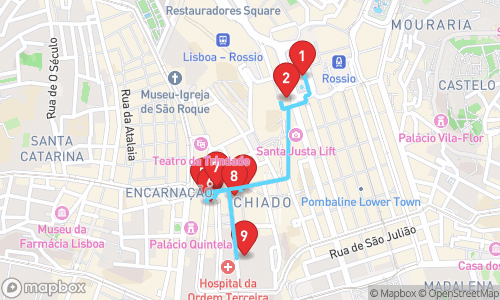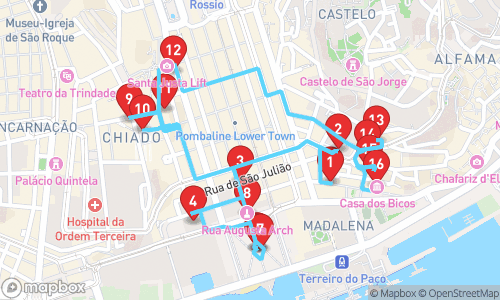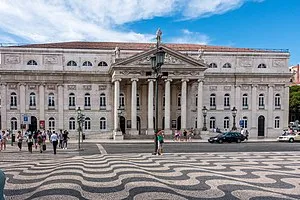
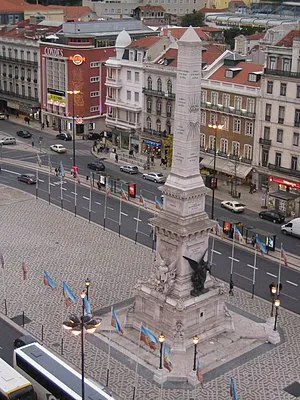

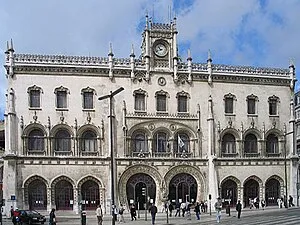
Lisboa Unveiled: A Journey Through Time

Tour Guide
Ryan Multilingual
Welcome to Lisboa! On this GPS guided audio tour, we will visit 20 stops on a route of 11.05km. This tour focusses mainly on general tourism.
Locatello is an app where you can generate personal audio guided tours. Set your preferred distance, guide, language and theme, and a guided tour is created on the spot.
Walking Time
Distance
stops
Language
Tour Stops

Teatro Nacional D. Maria II
A prime example of Neoclassical architecture with Palladian influence, the Teatro Nacional D. Maria II features a hexastyle portico with six Ionic columns and a sculpted relief on the pediment, topped with a statue of Gil Vicente, founder of Portuguese theatre.

Restauradores Square
A historic square dedicated to the restoration of Portugal's independence in 1640, featuring an obelisk with names and dates of battles fought during the Portuguese Restoration War and surrounded by 19th and early 20th century buildings.

Restauradores
A historic metro station in Lisbon, one of the original 11 stations on the network, opened on December 29, 1959, connecting to Rossio Railway Station and featuring architectural designs by Falcão e Cunha, Benoliel de Carvalho, and Sanchez Jorge.

Rossio railway station
A cultural heritage site, Rossio Railway Station is a historic railway station in Lisbon, Portugal, designed in Neomanueline style and built between 1886 and 1887.
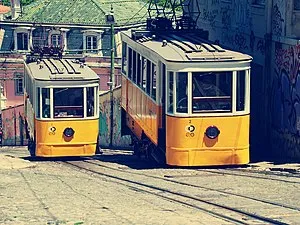
Ascensor da Glória
A historic tram system is situated in the city, featuring two parallel cars that descend and climb simultaneously, moving along a 19th-century urban axis.
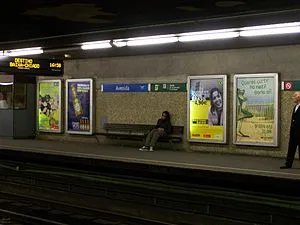
Avenida (Lisbon Metro)
A picturesque underground station, Avenida is one of the original 11 Lisbon Metro stations opened in 1959, featuring Arcadian architecture in its original design and later refurbished in 2009. It serves as a major stop on the Blue Line.
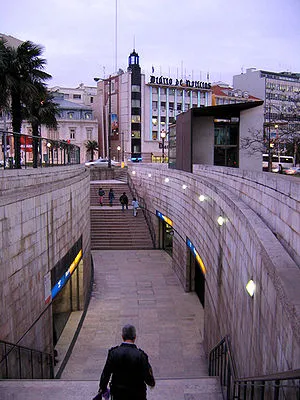
Marquês de Pombal
A metro station in Lisbon, serving as an interchange between the Blue and Yellow Lines, featuring an architectural design by Falcão e Cunha, José Santa-Rita, and João Santa-Rita, opened in 1959 and refurbished in 1995.

São Bento Palace
A historic government building, the São Bento Palace has served as the seat of Portugal's parliament since 1834 and is also home to the official residence of the Prime Minister. Originally a 17th-century monastery, it has undergone numerous renovations and expansions over the centuries.
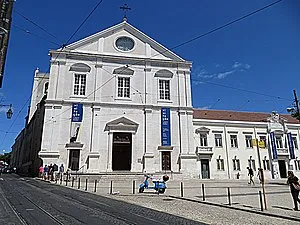
Igreja de São Roque
A Jesuit church featuring a Baroque-style chancel with intricate carvings, gilding, and upholstery, including a notable altar piece with statues of the Society's founders and saints, and a throne for exhibiting the Holy Sacrament.

Santa Justa Lift
A monumental elevator in Lisbon, connecting the lower streets of Baixa to the higher Largo do Carmo, offering panoramic views of the city.

Baixa-Chiado
A major interchange station in Lisbon, Baixa-Chiado connects the Blue and Green Lines of the Lisbon Metro. Designed by Álvaro Siza Vieira, the station opened in 1998 and serves as a hub for commuters.
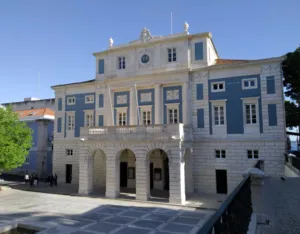
Teatro Nacional de São Carlos
A historic opera house in Lisbon, Portugal, the Teatro Nacional de São Carlos features neoclassical and rococo elements, with a seating capacity of 844 seats.

Cais do Sodré railway station
A harbour railway station that serves as the terminus of the suburban route to Cascais, featuring an inter-modal exchange connecting the Lisbon Metro, rail-lines, and river terminal centre.

Ribeira Palace
A palace in Lisbon, Portugal, built from 1498 to 1510 during the Manueline era, featuring Manueline architectural style, known for its Portuguese Renaissance design, ship-inspired ornaments, and intricate stone carvings.
Audio Preview
30 sec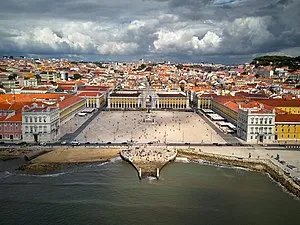
Praça do Comércio
A cultural heritage site, Praça do Comércio is a large, harbour-facing square in Lisbon, Portugal, with a rich history dating back to the 16th century.
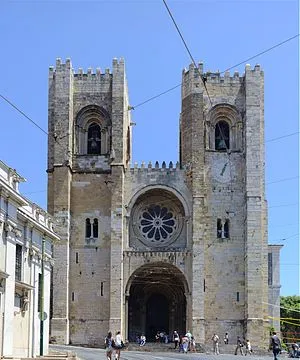
Lisbon Cathedral
A Roman Catholic cathedral, the oldest church in Lisbon, built in 1147, with a mix of architectural styles from Romanesque, Gothic, and Baroque periods, classified as a National Monument since 1910.
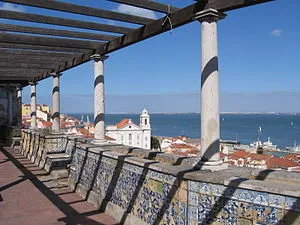
Miradouro de Santa Luzia
A scenic viewpoint in Lisbon, offering a wide view of the old Alfama quarter and the Tagus River.
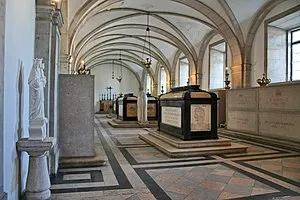
Pantheon of the House of Braganza
A pantheon serving as the final resting place for many members of the House of Braganza, including Portuguese monarchs, Brazilian monarchs, a Romanian monarch, queen consorts, and notable Infantes.
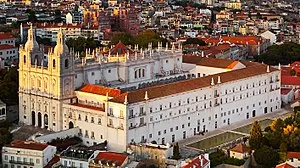
Monastery of São Vicente de Fora
A 17th-century church and monastery in Lisbon, Portugal, known for its Mannerist architecture and royal pantheon of the Braganza monarchs. The monastery also features a collection of azulejo ceramic tiles depicting various scenes and motifs.
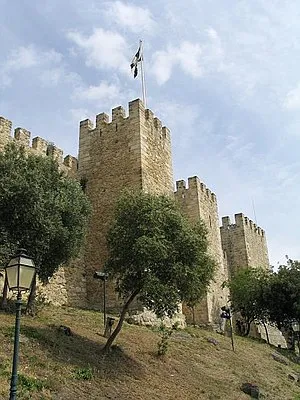
São Jorge Castle
A historic castle in Lisbon, São Jorge Castle has been a cultural heritage site since the 8th century BC, playing a significant role in the city's history, serving as a royal palace, military barracks, and national monument and museum.
Download App
Experience this tour and many more with our mobile app. Available for iOS and Android.
Audio Preview
Tour Map
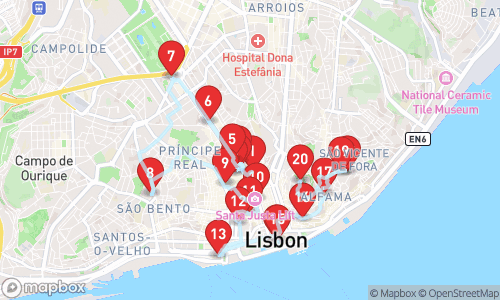
Quick Facts
- ✓GPS-guided navigation
- ✓Professional audio narration
- ✓Offline maps available
- ✓Premium content included
Why Choose This Tour
Expert Local Guide
Narrated by Jenny Multilingual, specializing in general tourism
Flexible Timing
Take the tour at your own pace, any time of day
